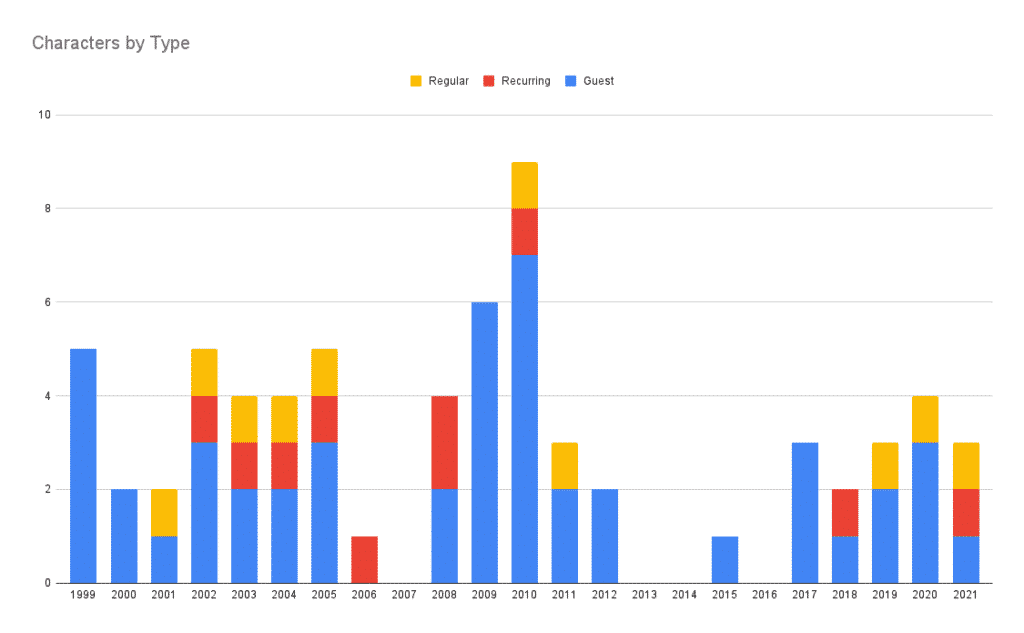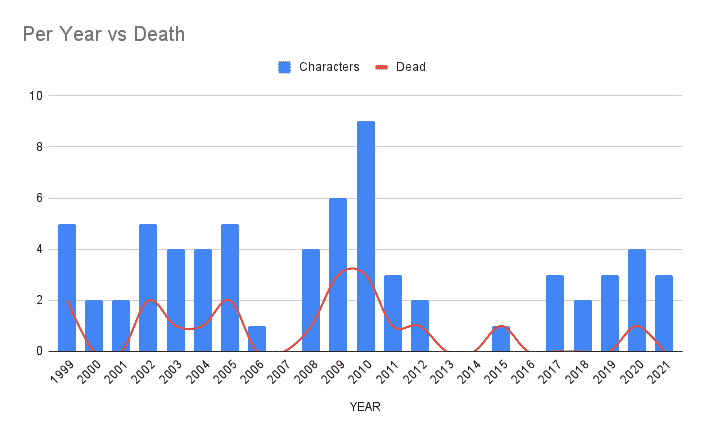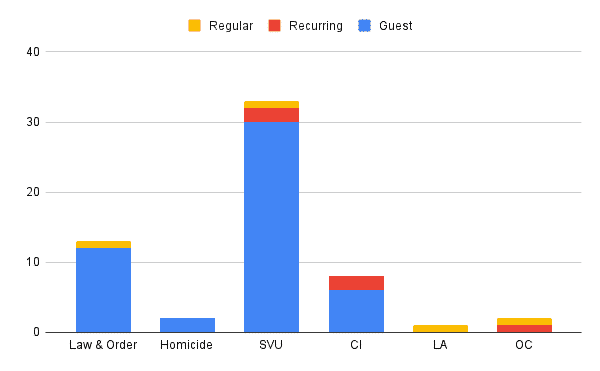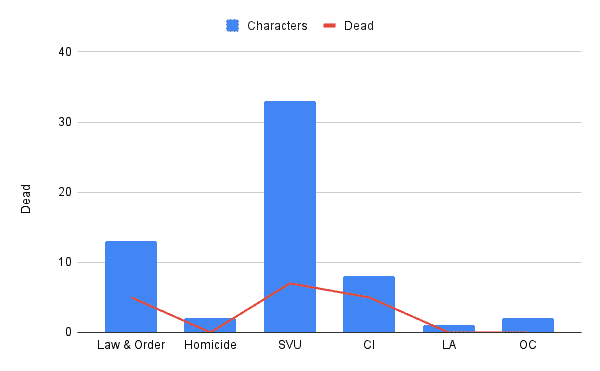After I posted about how show scores really haven’t improved as much as we might have hoped over the years, I wanted to find a way to demonstrate how there has been active improvements to representation on mainstream television. And the best way to do that is with a show (or rather, a series of shows) that have been on the air consistently since 1990.
That’s right. Today we’re deep-diving into the world of Law & Order. We’re going to look at the six series (yes, six) and show how their scores changed over time, demonstrating active improvement of representation on some of the darkest shows we all watch.
Order and Law
Before we jump into a timeline, we should look at what shows we’re actually talking about.
| Show Name | Years | Overall Score | Total Characters |
|---|---|---|---|
| Law & Order | 1990-2010 | 18 | 13 (5 dead) |
| Homicide: Life on the Streets | 1993-1999 | 22 | 2 (0 dead) |
| Law & Order: Special Victims Unit | 1999-current | 36 | 33 (7 dead) |
| Law & Order: Criminal Intent | 2001-2011 | 7 | 8 (5 dead) |
| Law & Order: LA | 2010-2011 | 56 | 1 (0 dead) |
| Law & Order: Organized Crime | 2021-current | 52 | 2 (0 dead) |
Right away, you can see that as time goes on, the scores got better (with the exception of Criminal Intent). The Homicide series actually is totally related, and is kind of a pre-cursor to SVU in that it had much grittier stories than L&O itself. But there were episodes that started on one show and ended on the other, and since those shows involved queers, we’re including it here.
The data used to generate this post has been stored in a Google Sheet, which is open to the public. Take it and make your own fabulously queer graphs.
Characters
The best way to do all this would be to calculate the score per year, however that’s actually really hard since we base the score on cliches, tropes, and the number of characters per type (regular, recurring, guest). There are also negatives for death, trigger warnings, and having cisgender actors play transgender characters. Scores are, in a word, messy. There’s a reason we automated it!
Instead, I decided to start with a look at how many characters per year, their character types, and their deaths. Given that we’re looking at 22 years, it’s better to jump into how this looks in a visual format. And if you’re thinking “22 years? But Mika, L&O regular sauce started in 1990 and that’s over 30!” then yes, yes it did. But we didn’t get any queers until 1999.

The blue column, which is the vast majority of all characters, are guests, red is recurring, and gold is regulars.
As the chart shows, we spiked with nine queer characters in 2010, which is actually shortly before the Great Lexa Spike of Death in 2016. You’ll notice that after 2010 there was a massive drop, and it’s just now started to pick up with a more balanced view.
What About Death?
For any of the Law & Orders, the biggest contributor to skewed numbers is the fact that the show has at least one dead person per episode. You would, then, expect to see a bigger spike for the number of death, but surprisingly (to me at least) the death toll stays pretty much the same:

In fact, there’s only one year (2015) where 100% of the queers we see die!
Shows
Another angle to look at is characters per show. That is, how many characters per show:

I chose to break them also apart by ‘type’ so you can see a large part of why LA and OC’s scores are so high (in the 50s) is because of the heavy use of regular and recurring characters as queer.
By that token, you might expect CI’s score (7) to be higher, since even the mighty SVU has a 36! For this, we have to have a quick history lesson.
Regular Law & Order was pretty much a queer-for-the-week kind of show. While it did have one regular character, we literally don’t learn she’s a lesbian until her final line of the series, where she asked if she’s being fired for being a lesbian. We all had a collective “What the what!?” at that moment. For it’s medicore queer rep, and the fact that the show is pretty uneven (IMO the Lenny Brisco years are the best), it got a ‘meh’ score.
Homicide only had two lesbians, in 1999, but it’s got a thumbs down for being ‘gritty’ in an unappealing way, and it has a higher trigger warning than regular L&O.
As for CI, the reason it’s so darn low is that 62.5% of all qualifying queers die on their show. I did a little looking and I think they may actually have the highest death rate of all criminal characters. Oh, yes, the majority of their characters who are queer are Big Bad Queers. Regular L&O on the other hand, has a steady balance of queers being suspects.
Most surprisingly of all is how few queers, overall, actually die on SVU! You’d think, with a show like they are, they’d have more, but actually a shockingly high number survive. In fact, let’s go to the chart!

And ultimately, death is the deciding factor. SVU has the most deaths, but also the most characters, balancing it out and giving it a higher score.
Conclusions
From all this, my take away is that the various Law & Orders are actively trying to have ‘better’ representation. Given the limitations of their shows, which is to say the nature of shows about crime and death resulting in a high number of guests being either criminals or victims, they’ve done surprisingly well! I would not be shocked to see SVU‘s score climb over the years, and I think if LA had had more seasons, they too may have continued to do well on that front.
But you can see, mid run of SVU that shift happening. Suddenly it’s not just en vogue to kill the queers, but it’s proper to give them as much respect as anyone else on the shows.
Who knew that Law & Order: SVU, originally best known for the queer baiting of Cabot and Benson, would become a leader in improvement.
